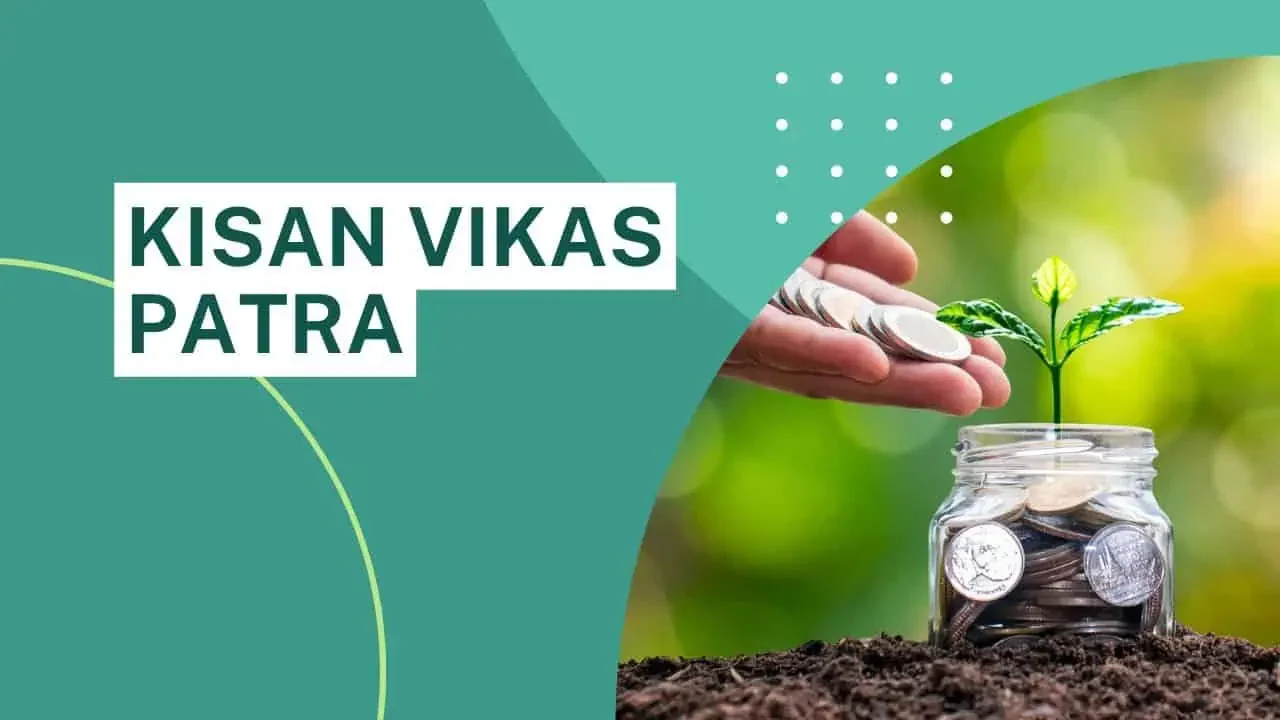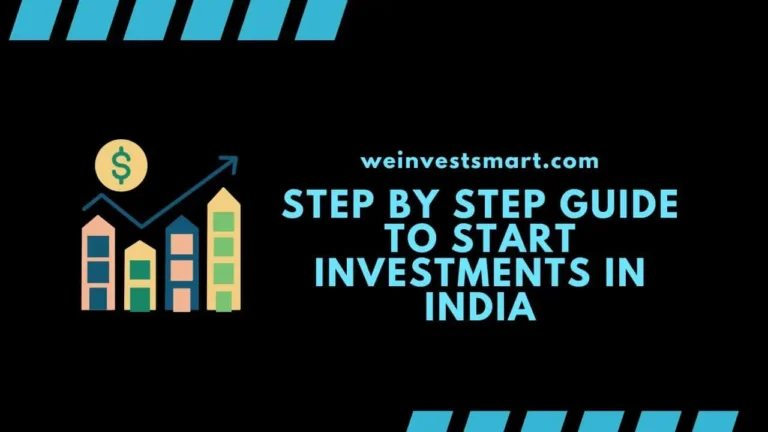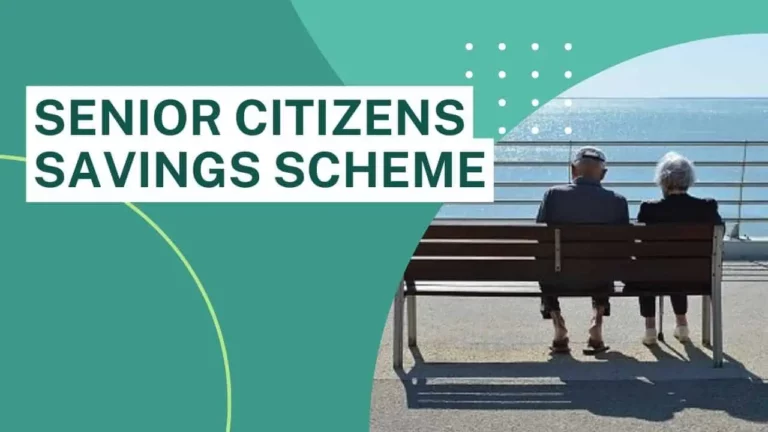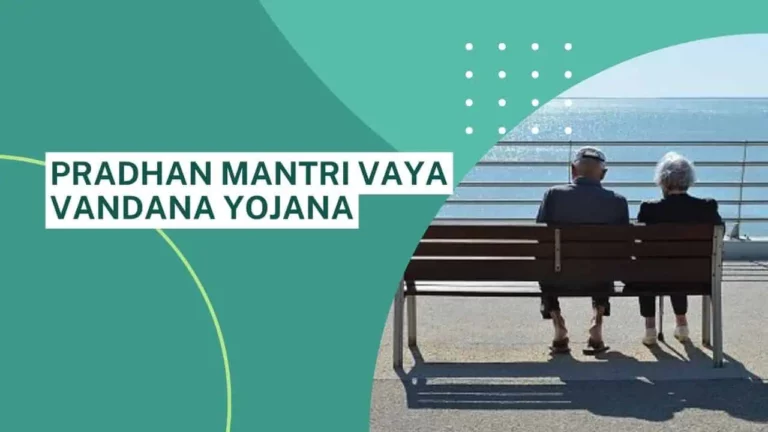Kisan Vikas Patra (KVP) Post Office – Full Details, Eligibility, Interest Rate Calculator, Tax, Withdrawal Rules, and Benefits
If you’re looking for a safe and reliable investment option with guaranteed returns, Kisan Vikas Patra (KVP) could be a great choice. This savings scheme is backed by the Indian government and is popular among investors because it offers low risk and high returns.

In this article, we’ll take a closer look at Kisan Vikas Patra and its various features, including who is eligible to invest, the Kisan Vikas Patra calculator, advantages, disadvantages, Tax applicable, Withdrawal Rules, and the benefits of investing in this scheme via Post Office.
KVP has a fixed interest rate that is compounded annually, which can help you grow your savings over time.
The latest Kisan Vikas Patra interest rate in 2023 is 7.5% which makes it an excellent choice for investments for investors who are looking for a safe investment option.
Consider reading: Latest small savings scheme interest rates in the Post Office.
Page Contents
Kisan Vikas Patra Scheme Overview and Latest Interest Rate
| Eligibility Criteria | Available to all Indian residents, including minors and joint holders |
| Investment Amount | Minimum Rs. 1,000; no maximum limit |
| Investment Tenure | 124 months (10 years and 4 months) |
| Latest KVP Interest Rate | 7.5 % |
| Interest Rate Revised On | 1st April 2023 |
| Maturity Value | Rs. 2,000 for every Rs. 1,000 invested |
| Premature Withdrawal | Allowed after 2.5 years from the date of issue |
| Tax Benefits | No tax benefits under Section 80C of the Income Tax Act |
| Nomination | Available |
| Transferability | Not allowed |
| Risk | Low |
Note: The interest rate and other details of Kisan Vikas Patra are subject to change from time to time, so it’s important to confirm the latest information before making any investment decisions.
Consider reading: National Savings Certificate Features and Benefits
Kisan Vikas Patra (KVP) Interest Returns Calculator
Use the below Kisan Vikas Patra interest returns calculator to check how much return you can expect from your investments.
Looking for investment calculators? Consider reading: PPF Excel Calculator
Types Of Kisan Vikas Patra Scheme Accounts
The KVP Scheme accounts are of three types:
- Single Holder Type Certificate: This kind of certificate is issued to an adult for themself or on behalf of a minor or to a minor.
- Joint ‘A’ Type Certificate: This type of certificate is issued jointly to two adults, payable to both the holders jointly or to the survivor.
- Joint ‘B’ Type Certificate: This type of certificate is issued jointly to two adults, payable to either of the holders or to the survivor.
Eligibility Criteria For The Kisan Vikas Patra Scheme
The following are the eligibility criteria for investing in the KVP scheme:
- The applicant has to be an adult resident of India.
- A parent/guardian may invest on behalf of a minor.
- Hindu Undivided Families (HUFs) and Non-Resident Indians (NRIs) cannot invest in Kisan Vikas Patra.
How to Invest in Kisan Vikas Patra Post Office Scheme
You can invest in Kisan Vikas Patra via post office by following these steps:
- Visit your nearest post office branch and ask for the KVP account opening form.
- Fill up the form with your personal details, such as name, address, Aadhaar number, PAN number, etc. You also need to paste your photograph on the form.
- Enter the amount of investment, which can be any multiple of Rs. 1,000, and the mode of payment, such as cash, cheque, or demand draft. You can also choose the option of electronic transfer if you have a post office savings account.
- Enter the nomination details, if any, and sign the declaration at the end of the form.
- Submit the form along with the KYC documents, such as Aadhaar card, PAN card, etc., to the post office staff.
- The staff will verify the documents and issue a certificate for the KVP account, which will have the account number, name of the holder, date of issue, maturity date, and the maturity amount.
You can make subsequent investments in the KVP account either by visiting the post office branch or by using the electronic transfer option. The minimum investment amount is Rs. 1,000 and there is no upper limit.
The KVP account will mature after 124 months from the date of issue or when the holder requests for premature closure, whichever is earlier. You can also transfer the KVP certificate from one person to another, and from one post office to another, according to India Post.
Advantages of the Kisan Vikas Patra/KVP Scheme
The main advantages of Kisan Vikas Patra (KVP) are:
- Assured returns: Irrespective of market fluctuations, individuals who have put their money into this scheme would generate a guaranteed sum as the scheme is backed by Govt of India.
- Compounding interest: The interest rate of the KVP Scheme tends to vary, and such variations depend on the year an individual invested in it. The rate of interest effective from 01/04/2023 is 7.5%. The interest accrued on the invested sum is compounded yearly, ensuring more returns to individuals.
- Maturity time: The time horizon of the KVP scheme is 124 months. After completing the said period, the scheme matures and extends a corpus to a KVP scheme holder. In case, individuals decide to withdraw the proceeds generated later than the maturity period; the amount would accrue interest until it is withdrawn.
- Cost of Investment: Individuals can deposit money into this scheme with as little as Rs. 1,000 and invest as much as they want to. However, the amount has to be a multiple of Rs. 1,000, and a sum over Rs. 50,000 would require PAN details and would be extended by a city’s head post office.
- Taxation method: An amount that is withdrawn post maturity is exempted from Tax Deducted at Source or TDS. However, the KVP scheme is not entitled to any tax deductions mentioned under Section 80C.
- Nomination: Individuals can select a nominee in this scheme. All they would need to do is fill up a nomination form, offer the required details of their choice of nominees, and submit it. Also, Individuals can even select a minor as their nominee.
- Loan against a certificate: Individuals can avail of a loan against their investment in the Kisan Vikas Patra scheme. The KVP certificate would act as collateral while applying for a secured loan and individuals would be able to avail of a loan at a lower interest rate
Disadvantages of Kisan Vikas Patra
The Kisan Vikas Patra (KVP) is a small savings scheme offered by the Government of India, which allows individuals to invest a fixed amount of money and earn a fixed rate of interest over a set period of time.
The main disadvantages of Kisan Vikas Patra (KVP) are:
- Low returns: The KVP offers a fixed rate of interest, which may be lower than other investment options such as mutual funds or stocks. This means that the returns on the KVP may not keep pace with inflation, which can erode the value of your investment over time.
- Long lock-in period: The KVP has a long lock-in period, which means that the investment cannot be withdrawn before the maturity date. This can be a disadvantage for those who may need access to their funds before the end of the lock-in period.
- Limited flexibility: The KVP is a fixed investment, which means that you cannot make additional contributions or change the investment amount once it is set. This can be a disadvantage for those who may want more flexibility in their investments.
- Tax implications: Interest earned on the KVP is taxable, which can reduce the overall returns on the investment.
Consider reading – 13 Safe investment options with high returns
Documents Required to Open a Kisan Vikas Patra Account
Eligible individuals can avail of the KVP scheme in 2023 by offering the required documents.
Here is a list of documents required to Open a Kisan Vikas Patra Account In 2023:
- Form A must be duly submitted to an India Post Office branch or other specific authorized banks.
- Form A1, if the application is extended through an agent.
- Age proof (Passport, Aadhaar, PAN, etc.)
- Address proof (Aadhaar, Passport, electricity bill, telephone bill, ration card, etc.)
- Photo identification proof (Aadhaar, voter id, PAN, Passport, driving license, etc.)
How to Open Kisan Vikas Patra (KVP) Account
KVP account can be opened in the Post office or any authorized bank. If you fulfill the eligibility criteria then you can go to the post office or the authorized bank and fill in the necessary forms to open the account.
Withdrawal Procedure for Kisan Vikas Patra
Early Withdrawal Post 2.5 Years: The Kisan Vikas Patra (KVP), a popular savings scheme, offers flexibility for early withdrawal. Investors can access their funds after 2.5 years from the issuance date. However, the withdrawal value will depend on the duration the investment was held.
No Interest Before 3 Years: Withdrawing the KVP investment before completing 3 years? It’s crucial to know that this will yield only the principal amount, as no interest accrues within this period.
Post 3-Year Withdrawal and Penalties: If you choose to withdraw after 3 years but before the KVP matures, you will receive the accrued interest. However, be mindful of potential penalties that may apply in this scenario.
Withdrawal Process:
- Form Submission: Begin by completing a withdrawal form. This form is readily available at your local post office or the bank where you initiated the KVP investment.
- Documentation: Present your original KVP certificate along with valid identity and address proofs.
- Processing: After verification of your submitted form and documents, the withdrawal amount will be transferred to your bank account.
Recommendation for Optimal Returns: For maximizing benefits, it is advisable to retain your KVP investment until its maturity period of 10 years and 4 months. Premature withdrawals, while possible, might lead to reduced returns.
Remember, making an informed decision on when to withdraw your KVP investment can significantly impact your financial returns. Consider your options carefully and consult with a financial advisor if needed.
Are KVP Certificates Transferrable?
Yes, KVP certificates are transferrable from one post office to another one, anywhere in India, and from one person to another.
In case of the latter, i.e. transfer from one person to another, the following cases are permissible, but a letter in this regard needs to be submitted:
- Transfer from one owner to joint holders
- Transfer from joint holders to one of the holders
- Transfer from the name of the deceased to his legal heir
- From the joint holder/s to the judge of law and also to other individual/s as ordered by the Court of Law
Looking to evaluate investment options? Consider using: Investment Goal Calculator
Closing Thoughts on Kisan Vikas Patra (KVP)
As we conclude, it’s clear to see why Kisan Vikas Patra (KVP) has remained a trusted and popular investment option for Indians over the years.
Kisan Vikas Patra is not just an investment tool, but also a government-backed savings scheme that guarantees the safety of your funds while offering promising returns.
However, like all investments, it’s important to consider your personal financial goals, risk tolerance, and time horizon before investing.
This article aimed to provide you with a comprehensive understanding of Kisan Vikas Patra to aid you in making an informed decision.
Please use our Kisan Vikas Patra Calculator online tool to check returns on your investment and compare it with any other investment options.
Stay tuned for more articles providing in-depth information and tips about various investment options.
(Note: This article is intended for informational purposes and does not constitute financial advice.)
FAQs on Kisan Vika Patra (KVP)
What is the interest rate for Kisan Vikas Patra?
The latest interest rate for KVP effective from 01-04-2023 is 7.5%
How to buy Kisan Vikas Patra / KVP online?
Unfortunately, the Kisan Vikas Patra certificate can not be purchased online. Investors will have to visit the post office or the authorized bank to purchase the Kisan Vikas Patra certificate.
What is Kisan Vikas Patra / KVP maturity period?
As of April 2023; The maturity period for KVP is 120 months.
Is it good to invest in the Kisan Vikas Patra Post Office Scheme?
If you are an ultra-conservative investor and do not want to take any risk whatsoever for your investments, then you can consider investing in KVP for slightly higher interest rates than FD.
What are some Disadvantages of Kisan Vikas Patra / KVP?
The main disadvantage of KVP is the maturity period, It’s 10 yrs. Although you have an option for early withdrawal waiting for KVP to mature to get benefit is not suitable for an investor who is looking for good returns on his/her investment. KVP is also not tax efficient i.e. any gains from KVP will be added to your income for tax calculation.
Is Kisan Vikas Patra better than FD?
If you compare KVP with FD then KVP offers a higher interest rate than FD but if you looking to invest in KVP for a premature withdrawal then the experience of premature withdrawal in case KVP is not simple. In the case of FD, you can withdraw your money at any time.
Kisan Vikas Patra double in how many months?
For the April-June 2023 quarter, investments made into Kisan Vikas Patra (KVP) accounts are accruing an annual compounded interest rate of 7.5%. Given this current rate of return, it would take approximately 115 months, or roughly 9 years and 7 months, for your investment to double in value under this savings scheme.
How to calculate Income tax on Kisan Vikas Patra?
Investments made in Kisan Vikas Patra (KVP) are not eligible for tax deductions as per Section 80C of the Income Tax Act. Additionally, the interest generated from KVP is not tax-free. A 10% Tax Deducted at Source (TDS) is applicable on the interest accrued.
Is the maturity amount of Kisan Vikas Patra taxable?
Yes Maturity amount of Kisan Vikas Patra is taxable. The interest earned from Kisan Vikas Patra is added to the total income for tax calculation purposes.





